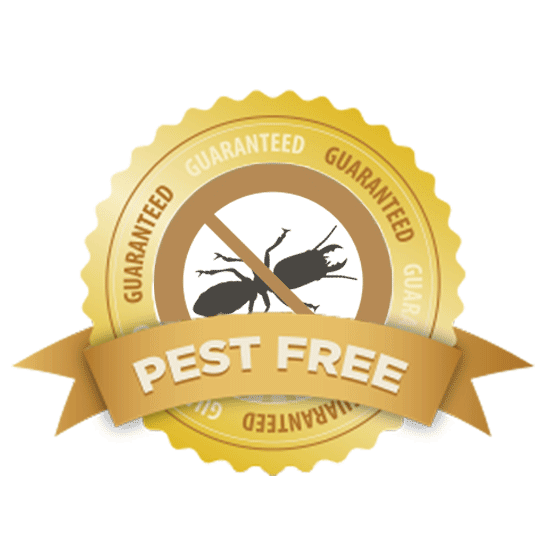A1 Pest Control Charlotte NC Bed Bugs - Expert Elimination Services
Wiki Article
Bed Insect Therapy Breakdown: Comparing Chemical Vs. Non-Chemical Solutions
In the world of bug control, particularly when taking care of the persistent concern of bed insects, the selection between chemical and non-chemical therapy solutions can be a pivotal one. Both methods supply distinct benefits and downsides, influencing factors such as effectiveness, security considerations, and total expense. By examining the nuanced details of each method, a more clear understanding of which course to pursue in addressing a bed insect problem can be achieved.Effectiveness of Chemical Treatments
Chemical treatments for bed insect invasions have actually been extensively acknowledged for their quick and potent effectiveness in eradicating these parasites. When considering the effectiveness of chemical therapies, it is important to comprehend that they can supply a quick and complete remedy to a bed insect problem.Additionally, chemical therapies have the advantage of providing recurring impacts, indicating that they can remain to remove bed insects also after the preliminary application. This residual action is specifically advantageous in combating any kind of potential re-infestations. Furthermore, the rapid activity of chemical therapies can bring alleviation to people dealing with extreme bed bug problems, enabling them to regain control of their home swiftly.
Safety Worry About Chemical Solutions
One vital aspect that calls for careful consideration when utilizing chemical services for bed pest therapy is making sure the safety and security of residents and the atmosphere. While chemical treatments can be efficient in removing bed bugs, they may present threats otherwise taken care of correctly. Among the main security worry about chemical solutions is the prospective damage they can cause to human health. Exposure to certain chemicals made use of in bed insect therapies can lead to respiratory issues, skin irritability, or various other damaging responses, particularly in individuals with pre-existing problems or sensitivities. Additionally, improper application or dose of chemical pesticides can result in harmful residues remaining in the treated location, presenting lasting health and wellness dangers to passengers.Furthermore, the ecological influence of chemical remedies is one more substantial factor to consider. Some chemicals made use of in bed insect therapies may be dangerous to beneficial pests, wild animals, and ecological communities if they leach into the dirt or water systems. It is important to utilize chemical therapies sensibly, adhering to safety and security standards, and taking into consideration less harmful options to alleviate these risks and make sure the effective and safe monitoring of bed pest infestations.
Benefits of Non-Chemical Techniques
Considering the possible safety worries and environmental impact associated with chemical solutions for bed insect therapy, discovering non-chemical strategies offers an appealing option with numerous distinctive advantages. Non-chemical therapies are ecologically friendly, as they do not contribute to air or water pollution, making them a lasting option for parasite control.In addition, non-chemical services can be reliable in targeting bed insects, consisting of hard-to-reach locations where chemical therapies may not penetrate. Techniques such as warmth treatment, vacuuming, steam cleaning, and mattress coverings offer complete elimination without using harmful chemicals. Furthermore, non-chemical strategies can be less turbulent, requiring very little preparation and permitting quicker reentry right into treated locations. Generally, selecting non-chemical bed pest therapy techniques not only prioritizes safety and ecological defense however additionally makes certain reliable and extensive pest control.
Limitations of Non-Chemical Treatments

Furthermore, non-chemical therapies often require several applications to accomplish successful elimination. This clark pest control can be lengthy and may not always ensure complete elimination of all bed pests and their eggs, especially in hard-to-reach or concealed places.
Furthermore, the success of non-chemical treatments heavily depends on correct implementation and thoroughness, which can be challenging for people without professional expertise. Poor application of non-chemical techniques might result in insufficient removal, bring about consistent infestations and the demand for additional treatments.
Therefore, while non-chemical therapies have their benefits, it is crucial to recognize these limitations and consider them when determining one of mice infestation the most efficient method for taking care of bed bug infestations.
Expense Comparison: Chemical Vs. Non-Chemical Options
Provided the limitations associated with non-chemical treatments, an important facet to assess in the context of bed bug monitoring is the expense comparison in between chemical and non-chemical alternatives. In contrast, non-chemical therapies like warmth therapy or heavy steam can be much more pricey, with expenses ranging from $1,000 to $6,000 for an entire home. While the preliminary cost of chemical treatments may appear reduced, several therapies might be needed to fully eradicate the infestation, potentially enhancing the overall cost.Conclusion

Thinking about the potential safety and security issues and environmental impact linked with chemical services for bed insect treatment, exploring non-chemical methods offers an appealing choice with numerous unique benefits.Offered the constraints connected with non-chemical treatments, an important aspect to examine in the context of bed pest administration is the price contrast in between chemical and non-chemical alternatives. In comparison, non-chemical treatments like heat treatment or steam can be a lot more expensive, with expenses varying from $1,000 to $6,000 for an entire home. Bonuses While the initial expense of chemical therapies might appear reduced, numerous therapies may be called for to totally eradicate the infestation, potentially enhancing the total cost.In final thought, when comparing chemical and non-chemical bed insect therapy choices, it is essential to think about efficiency, safety, benefits, limitations, and price.
Report this wiki page